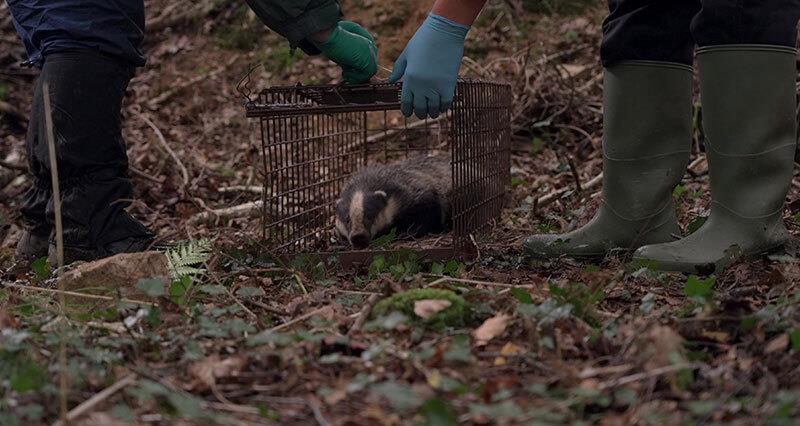The three-year research project has been driven by farmers in Cornwall who want to better understand the impact badger vaccination may have, both in preventing TB in the badger population and, critically, in cattle herds.
With a reduction in bovine TB in England over the past decade1, farmers are looking to develop the tools needed to maintain this trajectory to reach TB eradication, especially as wildlife control licenses come to an end.
�ʼһ���and ZSL (the Zoological Society of London) successfully secured £1.4 million of Defra funding to enable this work to take place.
A previous study, implemented on a small scale by ZSL and the Cornwall Wildlife Trust, found that the number of badgers testing positive for exposure to TB dropped from 16% to 0% over four years of vaccination2. This new project aims to further analyse the impact of vaccination upon disease control, whilst exploring whether vaccination can be successfully scaled up and delivered in a more cost-efficient way, including upskilling farmers to deliver badger vaccination themselves.
The project will pilot three different vaccination approaches to determine which delivery model works best at scale in a cost-effective way:
- Standard Approach – Annual vaccination over four years, following the current badger vaccination guidelines.
- Intermittent – Vaccinate every other year (year one and three) with the aim of reducing delivery costs and enabling faster expansion.
- Targeted – Reactive vaccination based on TB breakdown holdings and nearby farms.
Through blood tests, the project will track the effectiveness of vaccination within the badger population and will use cameras to estimate badger population densities, vaccination coverage and badger recovery rates in post-cull areas.
NFU member and livestock farmer Martin Howlett is taking part in the project. He said: “My farm was repeatedly hit by TB over a 15-year period. Losing cattle, even if it’s only a few each time, takes a massive toll on the family and the business, which was essentially frozen. What I remember most from that time was a constant sense of dread.
“Wildlife control played a key part in helping us to eradicate TB on our farm and we’ve been TB-free for five years now, but we know this measure won’t be available forever. It’s vital we look at other tools to ensure we can continue to reduce cases.
“I’m hoping this project will deliver the evidence we currently don’t have – that badger vaccination can be delivered at a much bigger scale across the country and help farmers in the fight against bovine TB."
ZSL’s team of vaccinators will work with industry to train farmers and landowners in the area to increase the capacity for vaccination delivery, ultimately in the long-term allowing more landowners to access badger vaccination where appropriate as a means of disease control.
Rosie Woodroffe, Professor at the Institute of Zoology at ZSL, said: “For half a century, wildlife advocates and farmers have argued about the best way to manage the risk of TB transmission between badgers and cattle. Ultimately, we all want the same thing: to see TB eliminated so that farmers, their livestock, and wildlife can all thrive.
“By working together to compare different approaches, we can develop a shared understanding of the evidence as it emerges and use it to identify TB control solutions which are effective and sustainable.”
